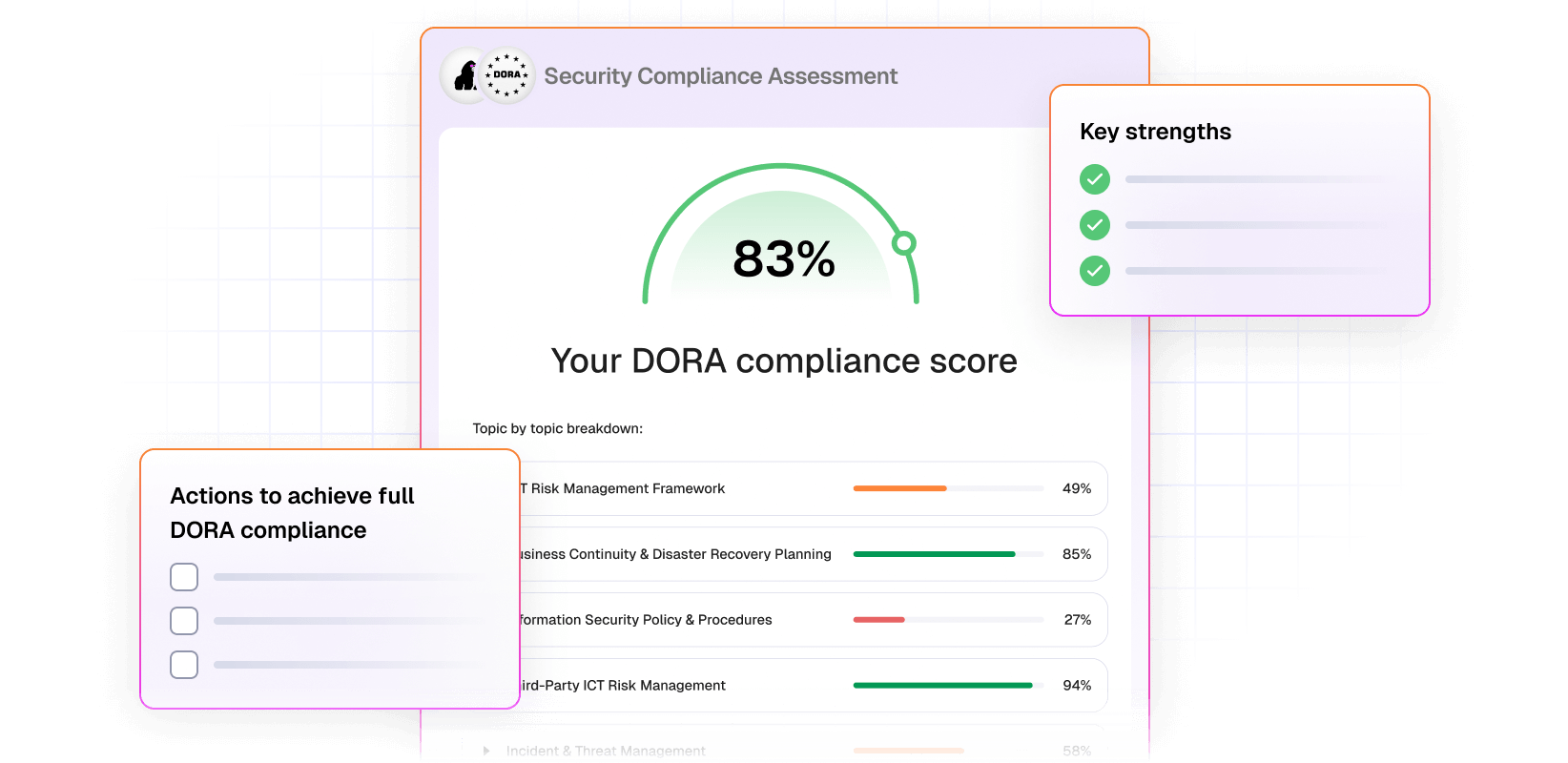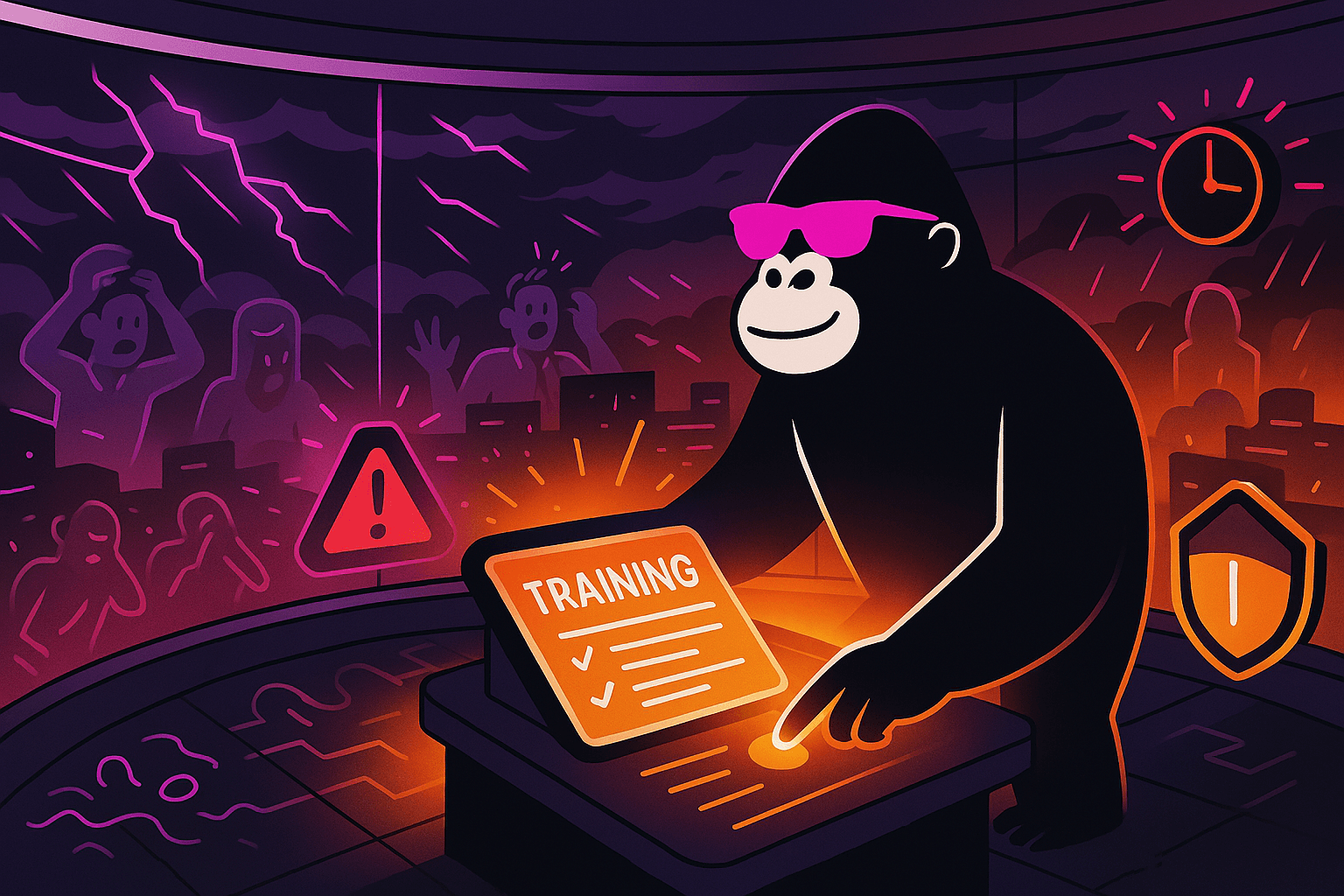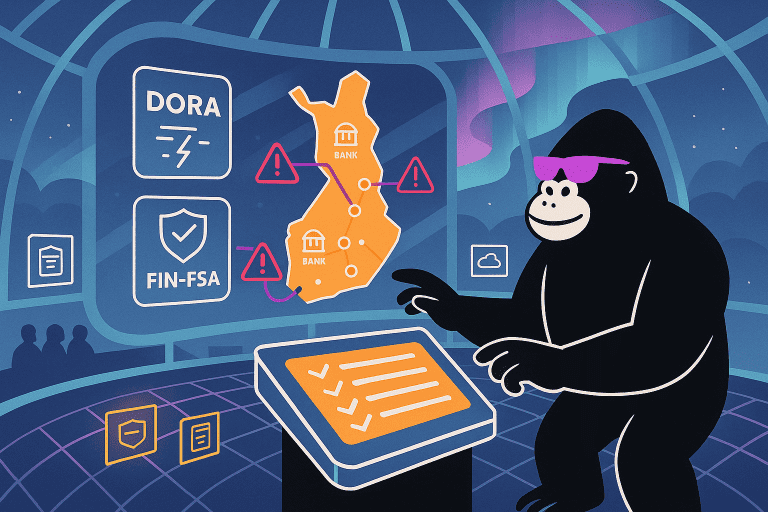When I reflect on employee training, one particular client situation stands out. A financial services client, overwhelmed by the demands of the Digital Operational Resilience Act (DORA), asked me directly, “How can we possibly train everyone for this and still keep operations running?”
This wasn’t just a logistical challenge but a plea for clarity amidst a sea of new compliance obligations. For those of us in the cybersecurity and compliance fields, such scenarios are becoming increasingly common. As companies scramble to align with DORA training requirements, understanding what’s expected and how to implement it effectively is crucial. In this article, I’ll break down the key elements of DORA training requirements to help you navigate this mandatory task successfully.

Assess your DORA readiness for free!
Evaluate your organization’s compliance gaps and find areas for improvement—no prior DORA knowledge needed.
Why DORA training matters: Beyond checkboxes
The first step to understanding DORA training requirements is grasping the purpose behind them. At its core, the DORA framework is about ensuring that financial institutions remain operational—even during a cyber crisis. Training plays a pivotal role in this. Without well-trained employees, even the best cybersecurity automation tools and frameworks are little more than expensive safety nets.
When working with a mid-sized investment firm, we identified a glaring gap: while their IT team was highly skilled, their broader workforce had minimal awareness of operational resilience. This gap wasn’t just theoretical—it had real-world consequences. In one instance, a phishing email made it past their filters and into the inboxes of several key staff. Without proper training, one employee clicked, escalating a minor incident into a near-crisis.
DORA training fills this gap by creating a common understanding across teams and roles, ensuring resilience isn’t just IT’s responsibility but a shared organizational goal.
Understanding the core elements of DORA training
To comply with DORA regulation training, institutions must address several critical areas of operational resilience. These aren’t just theoretical concepts—they’re practical, role-specific capabilities that strengthen the organization from the ground up.
To simplify, here’s a table outlining the core training areas and their focus:
| Training category | Focus |
| Cybersecurity basics for all employees | Foundational knowledge to recognize and mitigate common threats like phishing and ransomware. |
| Advanced training for IT teams | In-depth technical training on incident response, penetration testing, and monitoring systems. |
| Cross-functional coordination | Building organizational resilience through disaster recovery and inter-departmental collaboration. |
Each of these categories plays a unique role in meeting DORA training requirements, and they require tailored approaches to be effective. Let’s explore each in more detail.
Searching for a third-party risk management solution?
VendorGuard ensures seamless DORA compliance.


Cybersecurity basics for all employees
When it comes to operational resilience, your workforce is both your greatest asset and your biggest vulnerability. DORA mandates foundational cybersecurity training for all employees, emphasizing the importance of awareness and vigilance.
This training focuses on the following:
| Focus area | Objective |
| Recognizing threats | Employees learn to identify phishing attempts, social engineering tactics, and ransomware scams. |
| Mitigating risks | Employees follow clear protocols for reporting suspicious emails and securing sensitive data. |
For example, during a phishing simulation at our client’s company, one department had a 60% click-through rate on a fake phishing email. Post-training, the rate dropped to under 10%, demonstrating the effectiveness of targeted education.
PRO TIP
Use a risk-based role matrix to prioritize training depth. For example, finance and customer support roles handling sensitive data should undergo more frequent phishing simulations than others with limited data access.
However, it’s important to consider that not all employees are proactive when it comes to training. Thus, it’s important to ensure engagement. Here’s a few tricks:
| Engagement method | Purpose |
| Interactive workshops | Offer hands-on learning opportunities to improve understanding and retention. |
| Gamified scenarios | Increase participation and make learning enjoyable through quizzes and challenges. |
| Regular reminders | Reinforce key practices through tips shared via email or during team meetings. |
The ultimate goal is to make cybersecurity awareness a seamless part of daily routines—turning resilience into second nature for every employee. At CyberUpgrade, we achieve this by bringing security awareness training directly to where employees work: Teams and Slack.
Our proactive Copilot engages employees individually, teaching cybersecurity through interactive, conversational sessions. It assesses their current knowledge and builds on it in a friendly and engaging way, making the experience both personal and effective.
The impact is immediate. One of our recent clients who implemented Copilot saw a remarkable boost in engagement, with the majority of employees completing the training voluntarily within the first hour. It’s proof that when security becomes accessible and engaging, everyone gets on board.
Advanced training for IT teams
Unlike most of your staff, IT professionals are the frontline defenders of your organization’s digital resilience, so their training needs to be both rigorous and specialized. DORA’s requirements for IT teams emphasize technical expertise and incident management.
Key training areas include:
| Training area | Objective |
| Incident response | Teams master detecting, containing, and recovering from cyberattacks. |
| Penetration testing | Regularly test organizational defenses to identify vulnerabilities. |
| Monitoring systems | Use advanced tools for continuous monitoring and threat detection. |
In practice, these skills are honed through hands-on activities. For example, we routinely organize simulated attacks for our clients to test their IT team’s ability to respond under pressure. These exercises not only improves their response times but also highlights weak points in their processes, such as unclear escalation protocols.
But that’s not all. It’s important to note that continuous professional development is critical in this area. Certifications such as CISSP (Certified Information Systems Security Professional) or CEH (Certified Ethical Hacker), along with training on specific tools, ensure IT teams stay ahead of evolving threats.
PRO TIP
Rotate responsibility during simulated breaches. Let different IT sub-teams lead drills to build broader confidence and reveal interdependencies that may otherwise go unnoticed under routine structures.
Cross-functional coordination
The most important part of the DORA training requirements is understanding that cybersecurity is no longer just IT’s responsibility—it’s an organizational priority that spans departments. DORA recognizes this by requiring training in cross-functional collaboration, ensuring teams can work together effectively during disruptions.
| Focus area | Objective |
| Business continuity planning | Employees across departments understand their roles in maintaining operations during incidents. |
| Disaster recovery | Cross-functional teams practice restoring systems and services to minimize downtime. |
| Clear communication protocols | Teams establish a chain of command and learn how to report issues effectively. |
For instance, during a ransomware simulation with one of our client’s, we found that the legal team was unsure how to engage external stakeholders, while operations lacked clarity on backup restoration timelines. By addressing these gaps through targeted training, the organization was better prepared to manage future incidents cohesively.
When creating a strategy for coordination, there are two key aspects that you should consider:
| Method for building coordination | Purpose |
| Tabletop exercises | Help teams practice collaboration in a controlled environment. |
| Clear documentation | Ensure everyone understands their responsibilities and escalation paths. |
By focusing on practical exercises and clear guidelines, organizations can bridge gaps between departments and build a united front against operational disruptions.
PRO TIP
Schedule post-drill retrospectives. Use a structured “lessons learned” format immediately after each technical simulation to capture insights and improve future incident response plans across both IT and risk teams.
How CyberUpgrade elevates DORA training with smart automation
Many organizations struggle to meet DORA’s training standards while maintaining day-to-day operations—but it doesn’t have to be a trade-off. CyberUpgrade’s platform makes compliance training simple, scalable, and effective by delivering personalized, interactive sessions directly in Slack or Microsoft Teams. Whether you’re onboarding a junior analyst or upskilling a senior engineer, our Copilot adapts to individual roles and knowledge levels to boost engagement and retention—without disrupting workflows.
Our training framework is mapped directly to DORA’s requirements: foundational awareness for all employees, advanced technical drills for IT teams, and coordinated resilience simulations for cross-functional groups. Through gamified learning, real-time assessments, and hands-on exercises, we help turn compliance from a checkbox into a cultural strength. Our clients consistently report improved phishing detection, faster incident response, and clearer cross-department coordination after implementing our solution.
With CyberUpgrade, your employees don’t just complete training—they internalize it. And with measurable improvements in engagement, knowledge, and risk posture, you’ll be audit-ready and regulator-aligned without additional administrative load. DORA compliance becomes not just manageable, but strategic.
Building a resilient future
Reflecting on my experience, one thing is clear: effective training isn’t about meeting regulatory mandates—it’s about building a stronger, more resilient organization. DORA’s training requirements may seem daunting, but they’re an opportunity to embed resilience into your company’s DNA.
The investment firm I worked with didn’t just survive their initial challenges; they thrived. Employees who once dismissed cybersecurity as “not their problem” became proactive defenders of the company’s resilience. Their transformation wasn’t magic—it was the result of intentional, well-executed training aligned with DORA regulation training standards.
So, as you navigate DORA compliance, remember: it’s not just about ticking boxes. It’s about preparing your organization for whatever challenges lie ahead. Are your teams ready to rise to the occasion?

Assess your DORA readiness for free!
Evaluate your organization’s compliance gaps and find areas for improvement—no prior DORA knowledge needed.









